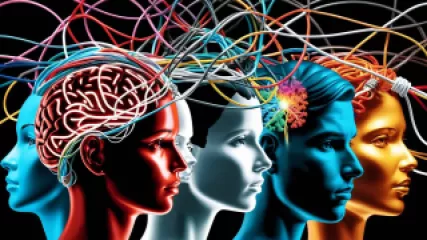Identifying Different Types of Cognitive Distortions
Welcome to our comprehensive guide on identifying different types of cognitive distortions. In this article, we will explore various cognitive distortions, their characteristics, and how they can impact our thoughts, emotions, and behaviors. By gaining a deeper understanding of these distortions, we can develop greater self-awareness and work towards overcoming them for improved mental well-being. So, let's dive in and learn more about common cognitive distortions and how to recognize them.
What are Cognitive Distortions?
Cognitive distortions are patterns of thinking that cause individuals to perceive reality inaccurately. These distortions often arise from underlying beliefs and assumptions that may be irrational or unhelpful. They can negatively impact our mood, self-esteem, decision-making, and overall mental health. Identifying and addressing cognitive distortions is an essential step in improving our well-being and fostering more positive and realistic thinking.
The Importance of Cognitive Distortion Awareness
Developing awareness of cognitive distortions allows us to challenge and reframe our negative thoughts. By recognizing these distortions, we can begin to question their validity and replace them with more accurate and balanced thinking. This awareness empowers us to respond to situations in a healthier and more constructive manner, leading to improved emotional resilience and overall psychological well-being.
Common Cognitive Distortions
Now, let's explore some of the most common cognitive distortions that individuals may experience:
- All-or-Nothing Thinking: Also known as black-and-white thinking, this distortion involves perceiving situations in extreme terms without considering any middle ground.
- Overgeneralization: Overgeneralization involves making broad generalizations based on limited evidence or a single negative experience.
- Mental Filtering: This distortion involves selectively focusing on negative aspects of a situation while ignoring any positive elements.
- Discounting the Positive: Discounting the positive involves dismissing or downplaying positive experiences, achievements, or feedback.
- Jumping to Conclusions: Jumping to conclusions involves making assumptions or interpretations without sufficient evidence to support them. This distortion can manifest as mind reading (assuming you know what others are thinking) or fortune-telling (predicting negative outcomes without factual basis).
- Emotional Reasoning: Emotional reasoning involves believing that our emotions reflect reality, regardless of evidence to the contrary. For example, assuming something is true because it feels true.
- Labeling: Labeling involves attaching negative and judgmental labels to oneself or others based on specific behaviors or characteristics.
- Should Statements: Should statements involve imposing rigid expectations on ourselves or others, leading to feelings of guilt, frustration, or disappointment when these expectations are not met.
- Catastrophizing: Catastrophizing involves magnifying or exaggerating the potential negative outcomes of a situation, often leading to increased anxiety and distress.
- Personalization: Personalization involves taking responsibility for events or situations that are beyond our control, often leading to unwarranted self-blame or guilt.
Recognizing Cognitive Distortions
Identifying cognitive distortions requires careful observation of our thoughts, emotions, and behaviors. Here are some steps to help you recognize cognitive distortions in your daily life:
- Practice Mindfulness: Cultivate mindfulness to become more aware of your thoughts and emotions. Notice any recurring negative patterns or beliefs.
- Keep a Thought Journal: Maintain a journal to record your thoughts and emotions throughout the day. Look for patterns or recurring cognitive distortions.
- Challenge Negative Thoughts: When you notice negative thoughts, question their accuracy and evidence supporting them. Consider alternative explanations or perspectives.
- Seek Feedback: Trusted friends, family members, or therapists can provide an outside perspective and help you identify cognitive distortions that you may not notice yourself.
- Consider Cognitive Distortion Solutions: Once you have identified a cognitive distortion, explore strategies to challenge and reframe these distorted thoughts. Cognitive-behavioral therapy (CBT) techniques, such as cognitive restructuring, can be effective in addressing cognitive distortions.
Conclusion
By familiarizing ourselves with common cognitive distortions and developing greater awareness of our thoughts, we can begin to challenge and reframe these distortions for improved mental well-being. Recognizing cognitive distortions is the first step towards cultivating more realistic, positive, and balanced thinking patterns. Remember, if you find it challenging to address cognitive distortions on your own, seeking the guidance of a mental health professional can provide valuable support through cognitive distortion online sessions. Embrace the journey of self-discovery and enjoy the benefits of a more accurate perception of reality.






